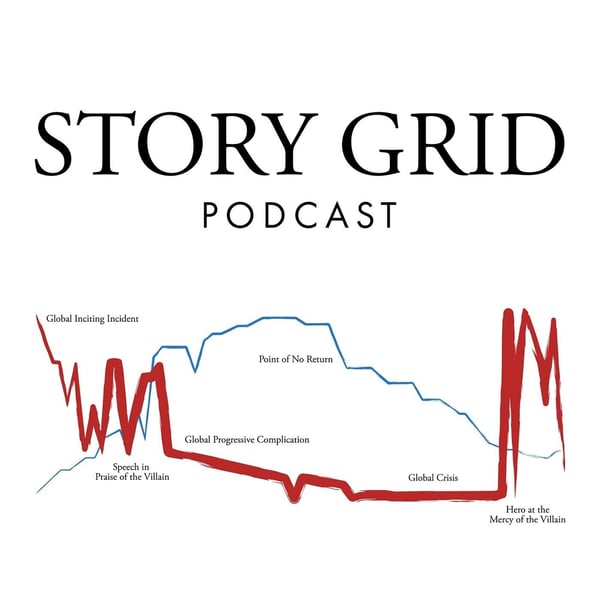Final Edits of a Short Story: Beat Construction and 624 Analysis
Story Grid Writing Podcast
Shawn Coyne
4.8 • 767 Ratings
🗓️ 27 October 2022
⏱️ 65 minutes
🧾️ Download transcript
Summary
Transcript
Click on a timestamp to play from that location
| 0:00.0 | Hello and welcome to the Storygrid podcast. My name is Tim Graal. I'm the CEO of Storygrid, |
| 0:05.5 | and I'm a struggling writer trying to figure out how to tell a story that works. |
| 0:10.2 | Joining me shortly is Sean Coyne. He's the creator and founder of StoryGrid and a writer and editor |
| 0:15.9 | with over 30 years of experience. Along with him is Danielle Kiyoski, the chief academic officer of StoryGrid |
| 0:23.5 | University and Leslie Watts, the editor-in-chief of StoryGrid Publishing. So last week was mostly |
| 0:30.0 | good news. I took a crack at writing the first two tropes, and as you listened to last week, |
| 0:37.1 | I had a specific way that I went about putting the tropes. And as you listened to last week, I had a specific way that I went about |
| 0:39.7 | putting the tropes in my own voice and then rewriting them in the style of a police report. |
| 0:45.5 | So we're continuing along this process of writing my own iteration of eyewitness by Ed McBain. |
| 0:52.5 | And last week, as you heard, I wrote the first two tropes, and literally |
| 0:57.1 | they only wanted me to change one word. I finally cracked how to get myself into this style of a police |
| 1:05.6 | report. And so my homework was to continue that for the rest of the scene. So that's what I did. |
| 1:11.0 | And that's what you're about to hear in this episode is how I went about doing that. |
| 1:15.5 | And then their feedback and changes that they think I need to make for the next iteration. |
| 1:20.0 | But it felt really good. |
| 1:22.0 | I feel like I'm making progress. |
| 1:23.9 | And again, I'm learning a lot about this process. |
| 1:34.0 | One of the things I want you to keep in mind here is that this isn't about me writing a perfect scene. |
| 1:35.0 | Obviously, we're trying to recreate this scene, write into my own voice, write it with my own |
| 1:40.0 | story, use it as a masterwork guide, all the things we've talked about. |
| 1:45.6 | But you have to remember, |
| 1:51.2 | it's not about just writing this short story. It's about putting tools in my toolbox that I can use in the future. And so as much as we're iterating and iterating and iterating, it's not just |
... |
Please login to see the full transcript.
Disclaimer: The podcast and artwork embedded on this page are from Shawn Coyne, and are the property of its owner and not affiliated with or endorsed by Tapesearch.
Generated transcripts are the property of Shawn Coyne and are distributed freely under the Fair Use doctrine. Transcripts generated by Tapesearch are not guaranteed to be accurate.
Copyright © Tapesearch 2025.

